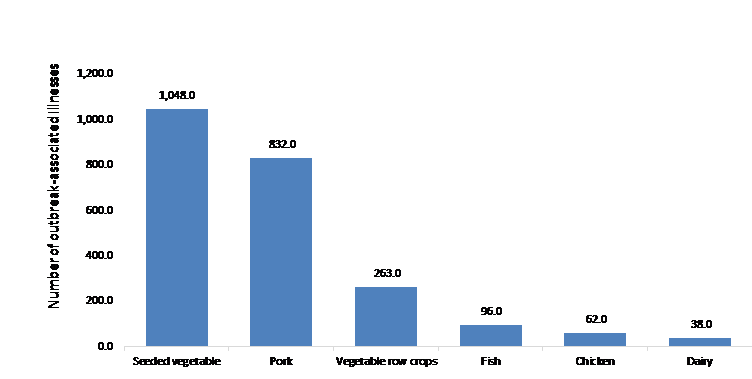The outlook on the growth of the food sterilization equipment market remains positive due to the increase in demand for processed and safe food products. The market is projected to witness significant growth in the next five years. Emerging countries such as India, Brazil, and South Africa offer a favorable market growth potential for the food processing market, which has led manufacturers to adopt strategies such as expansions and new product developments to cater to the demand and adopt effective equipment to increase their production capacity. Manufacturers are integrating advanced technological solutions in their equipment to expand their product lines and increase their profit margins. Moreover, international trade is another factor that influences the beverage processing and sterilization market. The Asia Pacific region offers profitable opportunities for food & beverage companies as it offers economical machineries for the production and sterilization processes and offers cost-effective solutions without forfeiting the quality of the product.
According to MarketsandMarkets, the global food sterilization equipment market is projected to grow from USD 678.8 million in 2018 to USD 922.7 million by 2023. Increase in the consumption of sterilized food products in the developing countries of the Asia Pacific and Europe has driven the growth of the food sterilization equipment market. Other trends such as packaging and shelf life enhancement present growth opportunities for the food sterilization equipment market.
Speak to Analyst @ https://www.marketsandmarkets.com/speaktoanalystNew.asp?id=9361190
What is driving the growth of the food sterilization equipment market?
The increasing occurrence of foodborne diseases and growing awareness of food safety among consumers
Foodborne diseases are one of the major concerns for public health across the globe. Rapid urbanization and changing lifestyles have led to a surge in demand for ready-to-eat and on-the-go food products among consumers. There are several factors that lead to the prevalence of foodborne illnesses. For instance, in the food industry, food ingredients such as herbs and spices often carry pathogenic microbes that can cause food spoilage and foodborne illnesses. In addition, the consumption of contaminated or improperly sterilized food products can expose consumers to harmful microbes such as bacteria, parasites, and viruses, which can result in severe illnesses.
Increasing health concerns among consumers, particularly in North America and Europe, have led to an increasing preference for safer, healthier, and higher-quality food products. Consumers have been educating themselves regarding food safety-related issues pertaining to various contaminants and the effects of processed and stored food on the body through various social media platforms and consumer regulatory acts. This presents market opportunities for food sterilization equipment with the growing inclination of food processing companies to provide healthy and safe food to their consumers.

Technological advancements in food sterilization
The key players operating in the food sterilization equipment market are increasingly focusing on adopting technological advancements and new product developments to strengthen their market presence. Advancements in sterilization equipment, in terms of efficacy, efficiency, accuracy, and improved functionality have led to an increased interest among various food & beverage manufacturing companies.
Increasing awareness of health benefits pertaining to nutrition-rich food coupled with the demand for contamination-free food have led to a surge in the adoption of new technologies, such as pressure-assisted sterilization, ultrasound, and aseptic packaging, used for food sterilization. New processes such as HPP (high-pressure processing), oscillating magnetic field, cold atmospheric plasma, ozone processing, and pulsed electric field are able to activate the pathogenic and spoilage microorganisms without affecting the nutritional or sensory quality of food. The US Food and Drug Administration (FDA) and the US Department of Agriculture (USDA) have approved the use of HPP as an alternative to the conventional process in food processing procedures.
New technologies can provide significant advantages over conventional methods including:
- Shorter process time
- Non-toxic to mammalian cells
- Leaves no toxic residues
- Energy savings
Inquiry before buying @ https://www.marketsandmarkets.com/Enquiry_Before_BuyingNew.asp?id=9361190
Heat sterilization is projected to be the most widely used technology in the food & beverage industry
Heat sterilization is one of the most widely used sterilization methods mainly due to its easy-to-handle characteristics and the need for low capital investment. The wide applications of heat sterilization in the food & beverage processing industry drive the growth of this market during the forecast period. Heat sterilization is used to achieve long-term shelf stability for a broad range of high-moisture food products and ingredients. Heat sterilization is cost-effective as compared to the other methods and hence is preferred by many food manufacturing companies worldwide.
Based on region, the sterilization equipment market is segmented into North America, Europe, Asia Pacific, and the Rest of the World (RoW).
- North America accounted for the largest share with a value of USD 246.6 million in 2017. This market is projected to grow at a CAGR of 5.8% during the forecast period. JOHN BEAN TECHNOLOGIES (JBT) (US), Buhler (Switzerland), Hisaka (Japan), Systec (Germany), De Lama (Italy), are a few key players that occupy a significant share in the global market for food sterilization equipment.
- The presence of key food sterilization equipment providers in countries such as the US, Switzerland, Germany, Spain, and the Netherlands also support the dominance of North America and Europe in the global market.